What can be verified began in 1972 in a sweltering bar in the city of Manaus. The isolated city adorns the jungle’s navel where the black swirling waters of the Rio Negro flow into the vast brown water of the Amazon. There German journalist Karl Brugger met with a deeply tanned and lithely muscled man of obvious European descent.
The man spoke broken German, Portuguese and Quechua Indian. He was reputed by the Yaminauá and Cashinahua tribes to be a great chief and called himself Tatunca Nara.
Brugger, leery of the man’s claims as to his identity, checked with the authorities in Rio de Janeiro, Brasilia, Manaus and Rio Branco. What he found was documentation beginning in 1968 when the White chief had saved the lives of twelve Brazilian officials whose plane had crashed in Acre, Brazil’s wild and uncharted jungle province bordering Peru.
Tatunca Nara had obtained their release from the Haisha Indians and brought the officials in to Manaus. He was vouched for by officers at the highest level of the Brazilian Secret Service. From 1969 – 1971 he had led the Indians in their doomed war against the encroaching White settlers seeking to mine their homeland in Peru’s untamed province of Madre de Dios. He had fled across the border to Brazil when the war was lost.
In Rio Branco, the capital of Acre, Tatunca Nara managed to enlist the help of Bishop Giocondo Grotti in his ongoing efforts to obtain aid for his people. But the Bishop died in a plane crash three months later. Peru was now unsuccessfully seeking Tatunca Nara’s extradition. It seems he was the real-life Tarzan and held in the highest reverence by Brazil’s military, which had no use for Peru.
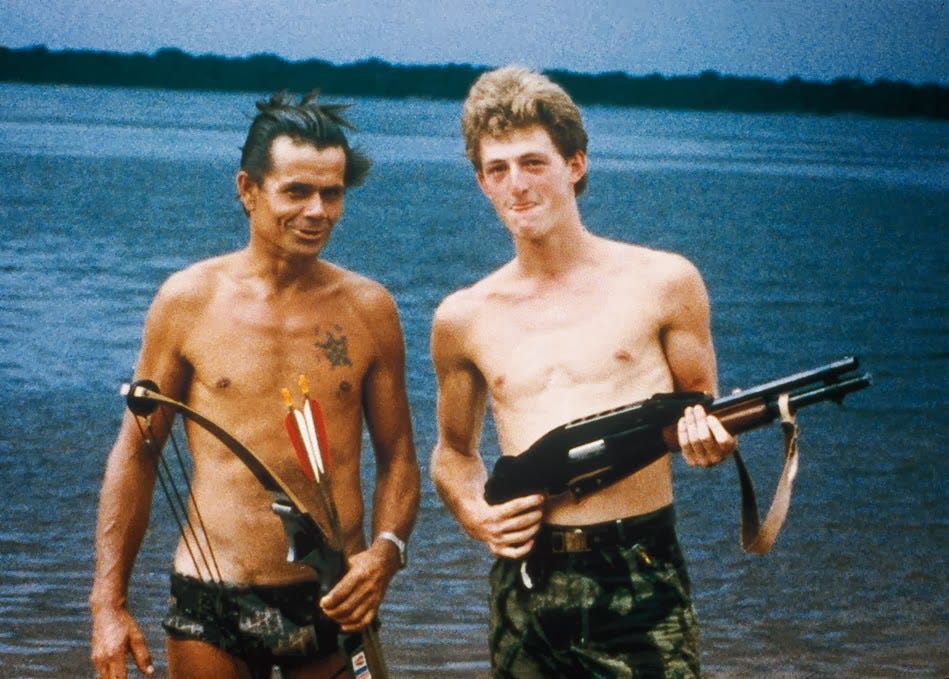
Tatunca Nana would recount to Brugger the history of the Ugha Monguhala Indians, a race of White Indians that were chosen by alien demigods to be their emissaries on earth. He said he was their chief and gave Brugger an explanation which began fifteen thousand years ago with the book of the Jaguar in the Chronicle of Akakor.
Golden ships appeared over a South American continent without mountains whose great river flowed from the eastern ocean into the Great Lake of Titicaca then out to the western ocean. The occupants of the ships, 130 families of White-skinned blue-haired humans with six fingers and toes on their hands and feet, came down to earth and brought civilization to its savage inhabitants.
The blue haired demigods claimed to come from a far-off place amongst the stars called Schwerta and to seal their covenant with them mated with the Ugha Monguhala, which means Allied Chosen Tribes.
The infusion of their blood made the Ugha Monguhala the chosen servants of the Former Masters, which is what the Ugha Monguhala sometimes called the blue haired demigods. Aside from having five fingers and toes, they looked just like them: tall with bluish black hair, protruding cheek bones, and sharply delineated noses with almond shaped eyes.
The Ugha Monguhala were the only White skinned people on the continent. And for 12,453 years, through cataclysmic wars and natural calamities that pushed this world to the brink of extinction, they would remain as the new masters, the descendants of the Former Masters.
The Ugha Monguhala built great cities of which Akakor; their capital was the greatest. It was built fourteen thousand years ago in a high valley between the frontiers of the two countries now known as Peru and Brazil under the guidance of the Former Masters. Akakor means second fortress. There were three fortresses.
Akakor, laid out in accordance to the four sacred points of the Former Masters, was surrounded by a high stone wall in which there were 13 narrow gates. The largest of the buildings within the walls was the Great Temple of the Sun. In the time of the Former Masters there were 26 smaller cities around Akakor. All of the cities were catastrophically destroyed 13 years after the departure of the Former Masters. They also built 3 great temple complexes, forbidden to man, to be used only in their own ceremonies. There was a pyramid in the middle of each and one could still be found eight days journey from Manaus.
For the Former Masters, the pyramid is not only a location but the symbol of a place between life and death, another world between this one and the next where time runs different. To them the pyramids are a link with a second life in that ethereal world.
With the arrival of the White barbarians, the Ugha Monguhala would have to eventually destroy Akakor and flee to the hypogeum city beneath it, which is an exact replica of the one above.
There are twelve tunnels in the subterranean Temple of the Sun that connect to twelve other underground cities which are arranged in accordance with the constellation of Schwerta.
The hypogeum Akakor is the center with the other subterranean cities radiating out from it. These cities were constructed for them by the Former Masters, and not even the German soldiers who settled with Ugha Monguhala in 1942 could figure out how they work.
Even after years of painstaking and methodical study, both the lighting that bathes everything in an incandescent blue glow and the ventilation systems remain a mystery. The flag of Akakor is a Black Sun Rising over the sea.
When the Former Masters left this world in 10,481 BCE, a war ensued between them and another race of demigods with the bodies of men and heads of animals. The war destroyed not only the earth but Venus and Mars too. Sometime during all this the moon settled into orbit around the earth.
In 10,468 BCE, what can only be described as the crustal displacement postulated by Charles Hapgood took place.
The earth heaved up into giant mountains freezing people in place. The great river changed direction and steaming jungles sprouted from its banks swallowing up vast tracts of land. Massive tidal waves drowned the big islands in the western ocean. What followed was over seven thousand years of barbarity that only ended when the waters of the great river rose up to flood the land and the waters of Lake Titicaca flowed into the sea.
The flood killed most the inhabitants. One of the Ugha Monguhala went up to the surface and built a raft to preserve the animals. After 13 moons passed, the animals were brought to dry land on the sacred mountain.
In 3166 BCE, the book of the Eagle begins. The Former Masters returned for three months and left behind two brothers: Samon who went to the east over the ocean and found Samaria; and Lahasa who stayed with the Ugha Monguhala and once again made them a great empire. It was said of Lahasa that he was a God and could not be defeated in battle. He would transform himself into an eagle for 13 days and rise into the sky for 13 days and walk towards the sun for 13 days.
All the tribes bowed down before Lahasa. Under his direction they built Machu Picchu. Lahasa would frequently take his flying disk across the ocean to visit Samon, his brother in the east who founded the Empire of Samon. To strengthen the ties of the two empires, Lahasa built the city of Ofir at the mouth of the great river, where it became the trading hub between the two great empires.
After three hundred years Lahasa returned to his home in the stars but he left behind his flying disk made of an unknown golden alloy.
He also left behind a strange vessel that could pass over mountains and water. It had seven long flexible legs, three in the front and three in the back that terminated in rollers and were attached to a silver bowl. The alien vehicles were left behind in the Temple of the Sun in the subterranean Akakor.
For a thousand years, Ofir was the richest city on earth until it was finally sacked by barbarian hordes from the east after Lahasa’s departure. In 570 AD fierce warriors, calling themselves the Goths, came in dragon ships from across the ocean.
They formed an alliance with the Ugha Monguhala and with their knowledge of iron and superior martial ability they crushed all the other tribes, including the upstart Inca who had been challenging the Ugha Monguhala for supremacy.
In the book of Ants bearded White men once again arrive this time in tall sailing ships during the early sixteenth century. The Whites sweep all before them, except for some resolute woman from Akahim, the sister city of Akakor and another of the three fortresses of the Allied Chosen Tribes.
The women came to be known as Amazons and made a gallant stand against the marauding White men, as numerous as ants, who deceive, plunder and murder in the name of the cross, the lying symbol of their false god.
Eventually the Amazons were forced into a subterranean existence, as were the Ugha Monguhala. In 1920, prince Sinkaia defiantly urged a limited war of retribution on the White barbarians. After shedding much blood in outlying settlements, he sent eighty Ugha Monguhala warriors through the subterranean passage system to emerge in the courtyard of a church, a citadel of the lying cross, in the heart of the city of Lima. They attempted to free some captive Inca nobleman, but all the warriors were slain after a fierce battle.
The heroic stand gave the Ugha Monguhala a moment of pride, but no real victories. The White barbarians brought a four-hundred-year period of sorrow for the Chosen Servants of the Former Masters, a time when they sang the song of the Black Sun.
“Woe on us
The sun shines black
His light covers the earth with sorrow
His rays foretell death
Woe on us.”
In 1936, the Ugha Monguhala captured four women from the town of Santa Maria. Three drowned trying to escape but the fourth –a German missionary named Reinha– becomes the bride of prince Sinkaia after renouncing the cross. Princess Reinha bore prince Sinkaia a son; Tatunca Nara. After four years Reinha returned to Germany and brokered an alliance between the Third Reich and the Ugha Monguhala.
The first Germans arrived in Akakor in the dry season of 1941. By 1945, the number of two thousand agreed upon German warriors had been reached. They brought armaments and trained the Ugha Monguhala in the use of modern weaponry. The plan was to attack Brazil from the interior while Germany seized her coast, but it never materialized. Germany was overrun by its enemies, marooning the German soldiers with the Chosen Servants.
When the gold mines of the Inca were discovered in Peru, the Germans used their knowledge of modern warfare and weapons to keep the gold crazed White Barbarians from penetrating far enough into the jungle to find Akakor. Tatunca Nara is informed that one of their vassal tribes captured twelve high officials of the White Barbarians and, after being ordered by his father prince Sinkaia to execute them, Tatunca Nara disobeys. Instead, he brings them into Manaus. He uses the officials’ gratitude to try to broker a peace, and although they try to help him, he is unsuccessful.
From 1968 – 1970 the incursions of the White Barbarians are escalated with the discovery of oil reserves in Madre de Dios. Eventually the Germans and the Ugha Monguhala with some of their vassals are driven into the underground cities. They destroy all evidence of their existence on the surface.
When prince Sinkaia dies, Tatunca Nara becomes the chief of the Ugha Monguhala. Still in hope of brokering peace he journeys to Rio Branco and meets with the high priest of the White Barbarians. Tatunca Nara gives the high priest two documents written by the Former Masters and convinces him that he is who he says he is.
The high priest returns to Akakor with Tatunca Nara and is given three documents of the Former Masters to convince his people that the story of Akakor is true. He goes back to the civilization of the White Barbarians, and they wait for him for six months. He never returns and they later find out he is killed in a plane crash and that the Vatican is now in possession of the documents…
Over twelve millennia ago, the Former Masters summoned their beloved servant Ma before they left and told him “Ina we are going home, we have taught you wisdom and given you good counsel. We return to our own kind. We are going home. Our days are completed. Keep us in your memory and do not forget us. We shall come back when you are threatened.”
In the end the priests of the Ugha Monguhala prophesize that the White barbarians will find Akakor and see in it their own mirror image. War will break out in the place where Samon founded his empire and gradually spread to the whole earth. The White Barbarians will reap what they have sown and there will be few left. Then the circle will be complete, and the Gods will return and once again walk the earth with man. [1]
The death of Bishop Giocondo Grotti in the obligatory plane crash was just the beginning of the Cirque du Soleil that would become the legend of Akakor.
In late 1972, Karl Brugger would attempt to find Akakor. He took along a cameraman and Tatunca Nara. Somewhere on the uncharted Yaku River within sight of the Andes, the canoe capsized, and they lost most of their gear.
The demoralized Brugger and cameraman turned back for Manaus in the canoe. By now thoroughly irritated by the whining of his over-civilized companions, Tatunca Nara takes off into the impenetrable jungle to see his people. He takes with him only the loin cloth and war paint he is wearing. Brugger and the cameraman make their way back to Manaus without him.
In 1984, Karl Brugger was gunned down by an assailant wielding an Uzi-like submachine gun on Ipanema beach in Rio de Janeiro.
He was with Ulrich Encke whom he was training to replace him at ARD a Consortium of public broadcasters in Germany. The ARD is the second largest broadcasting company in the world.
Brugger was retiring so he could make another expedition in search of Akakor. At the time Brugger was at the top of his game. When a memorandum was made public that was issued by Chilean strongman Augusto Pinochet naming the foreign correspondents in South America to be spied on, Brugger was on top of that list. [2]
Ulrich Encke’s live report was broadcast only once, on Bavarian Radio. The next morning the assassination became a “fatal highway robbery.” Encke’s original live report was never heard again on German radio or anywhere else.
The truth is an unidentified man emerged from the crowd placed two shots in his target, one right through the heart [3], and then melted back into the crowd. In fact, the only theft that appears to have taken place is when men who identified themselves as representatives of the German consulate ransacked the dead man’s room and removed his research on Akakor.
The subject of Akakor as never been adequately researched in English but there is much written in Spanish, Portuguese and German. One particularly well researched Brazilian piece is titled OLIVRO PROIBIDO DE KARL BRUGGER (CRONACA DI AKAKOR) A CIDADE SUBTERRÂNEA DA AMAZÔNIA or the Banned Book of Karl Brugger (The Chronicle of Akakor) The Underground City of the Akakor.
The author Rodrigo Garcia Veronezi says that while researching archives from Nazi Germany, Brugger unearthed the mother lode in the form of a 1945 film documenting the construction of a top-secret base in the heart of the Amazon by elite units of the SS equipped with submarines and sea planes. Veronezi goes on to say there is evidence of Nazi teams arriving in the area right up until 1965. [4]
Needless to say, the film has never been made available to the public but there is a film in German documenting a 1935 expedition the Nazi’s made right into the very heart of the Amazonian darkness. The Jary Expedition, 1935-1937, classified by SS intelligence, financed through NSDAP/AO and overseen by Himmler himself, was ostensibly part of the Guyana Project and is documented in Documentário: Expedição Nazista na Amazônia (Vale do Jari) 1935. [5]
The Guyana Project’s stated purpose was to explore the Jary tributary of the Amazon near French and British Guyana for potential Nazi colonization.
To this day no data has turned up on the Jary Expedition nor is it mentioned in the film, but its leader would later become the Third Reich’s acknowledged number one expert on aerial photo reconnaissance interpretation. [6]
Not long after Brugger was assassinated by his would-be mugger, as if on cue Zionist occupied Germany’s Federal Criminal Investigation Office issued the absurd statement that Tatunca Nara was in actuality Günther Hauck a man who in the photographical “evidence” appears more like a grown-up Eddie Munster than the photograph they produce of Tatunca Nara wearing his hair in the same style.
Frankly, Mrs. Hauck looks more like Tatunca Nara
Hauck is a deadbeat dad from Germany who disappeared in 1967, giving him one year to catch a flight to Brazil, become Tarzan, lead an Indian revolt as the acknowledged chief of the most mysterious and feared tribe in the Amazonian rainforest, save twelve Brazilian politicians from a tribe of known headhunters who considered him their leader, and in his off hours learn and memorize more about forbidden archeology that the entire cast of Ancient Aliens combined.
Zionist occupied Germany would also accuse Tatunca Nara of murdering just about everybody who ever disappeared in the unexplored regions of Brazil’s northwestern rainforest. They even demanded his extradition without a shred of proof even of Hauck’s unpaid alimony.
Fortunately for Tatunca Nara, the government of Brazil laughed at them just like everybody else in the world except for Zionist-occupied Wikipedia.
The Zionists, ever vigilant self-appointed guardians of all information dissemination in the western world, never give up, especially when it comes to their field of expertise, character assassination. In 1990 Zionist-occupied Germany’s media darlings Rüdiger Nehberg and Wolfgang Brög collaborated to produce Borg’s film Das Geheimnis des Tatunca Nara (The Mystery of Tatunca Nara), supposedly an expose of Tatunca Nara.
Das Geheimnis des Tatunca Nara played well in 1991 on ARD for Germany’s version of America’s Huffington Post crowd, but those that know the facts don’t buy any of it. The February – March, 2011 of edition of Nexus Magazine ran a cover spread on the whole Akakor story appropriately titled Twilight Zone. The piece in the well-established and equally well-respected magazine begins on page 63 promising its reader excerpts from Karl Brugger’s “rare book.”
Thanks to Nexus, the book is no longer rare or banned and a link has been made available to the book in its entirety in this article. The piece in Nexus ends with an editor’s note: “We are well aware of the German documentary which, based upon the book by Rüdiger Nehberg, purports to prove that Tatunca Nara was a fraudulent German worker named Hans Günther Hauck. However, I remain of the belief that the Tatunca Nara exposed in that documentary is not the same person described by Karl Brugger.”
Someone that knew the real facts of the story; that it was Rüdiger Nehberg, who was suspected of being Buggers murderer by Brazilian authorities [7], might just jump to the conclusion that Nehberg was using Germany’s Zionist-controlled media to smear Tatunca Nara and cover his slug-like trail.
An example of Nehberg’s journalistic integrity can be gleaned from the story he relates about how the insatiable serial killer Tatunca Nara, apparently on a whim, attempts to shoot Roldao Pires Brandao in front of the entire expedition. Brandao was an archeologist representing the Brazilian government in the 1978 expedition to find Akahim. Nehberg claims that as they both wrestled for the gun on a canoe the gun went off shooting Brandao through the arm and causing the cancellation of the expedition.
Famed adventurer and Swissair pilot Ferdinand Schmid witnessed the whole thing. He says of Brandao ‘he kicked the completely unsecured gun out of the boat and the boat touched the trigger. He had the barrel between his fingers and the shot went into his right hand. There was a flesh wound, which I treated and bandaged.’ Of Tatunca Nara’s whereabouts during the incident Schmid says ‘He was preparing camp for the night there on the plateau with his knife. I could see him well. Brandao was alone on the boat, and he alone triggered the shot. [8]’
Suspiciously enough Brandao would set out again in a few months without any of the Europeans or Tatunca Nara. His expedition would be financed solely by the Brazilian government. In the August 1, 1979, issue of Veja, a Brazilian newspaper, it would be reported that the expedition had found Akahim.
Photographs were published with the article, but since then access to the area has been restricted by the Brazilian government and nothing more has been said about Akahim.
Not to be outdone by the antics of anyone Jesuit trained circus clown Erich von Däniken threw himself headfirst into the melee. In his 1973 book Gold of the Gods, he said he had been shown the underground tunnel system in Ecuador by Janos “Juan” Moricz a well-connected Argentinean businessman of Hungarian descent. Moricz claimed to know the location of both a tunnel system and a pre diluvian library of metal books hidden within it.
Prior to his 1969 expedition to find the library, Moricz had met with the Ecuadorian president and came to an agreement that he would control any discovery he could document. There is no public record of Moricz having found anything during that expedition but nevertheless, unlike von Däniken, his reputation remained untarnished.
Moricz pet theory was the Magyars of the Carpathian Mountains of Europe are of American origin and are the post-apocalyptic founders of Sumerian civilization. The theory was and still is endorsed by many accredited scientists from around the globe. [9]
In a March 1973 interview with the German magazine Der Spiegel, Moricz denied having shown von Däniken the tunnel system, but he did not deny its existence saying that it was guarded by a tribe of Indians and that it had been shown to him by a man he would not name.
Moricz would eventually befriend Scottish adventurer and writer Stanly Hall, admitting to him that he had shown von Däniken a smaller cave named Cueva de los Tayos. The Tayos cave supposedly also connected to the larger system and would lead to the library. Hall organized a huge 1976 expedition that was a joint venture of the British and Ecuadorian militaries.
Hall’s expedition included over a hundred scientists and specialists. Astronaut Neil Armstrong was its honorary leader.
Cueva de los Tayos was mapped out, but no metal library was found, nor was any entrance into the fabled tunnel system of the Gods.
Moricz died in 1991, but that same year Hall was able to trace Petronio Jaramillo as the man who had originally shown Moricz the library.
By 1998, Hall was in the final stages of organizing another massive expedition which would be led by Jaramillo, who had never divulged the library’s location, when he received word in England that Petronio Jaramillo had been assassinated right in front of his home in Ecuador…
“The White Barbarians are destroying their own world with their false beliefs. They are blinded to such an extent they do not even recognize their origin. For only he who knows his past will also find the way into the future.” ~ Chronicles of Akakor
Analysis Black Sun Rising 1 & 2
Black Sun Rising I By Jack Heart & Orage
Black Sun Rising II By Jack Heart & Orage
Black Sun Rising III By Jack Heart & Orage
Black Sun Rising IV by Jack Heart & Orage
Black Sun Rising V By Jack Heart & Orage
Black Sun Rising VI, the Black Madonna and the Swastika by Jack Heart & Orage
Citations
1 – Brugger, Karl. “The Chronicle of Akakor.” 12 May 2001. Web. 26 Apr. 2016. Brugger Karl The Chronicle Of Akakor : Free Download, Borrow, and Streaming : Internet Archive
2 – WEIBEL, MAURICIO. “Pinochet’s Secret War on International Media.” Business Recorder. 5 Aug. 2012. Web. 26 Apr. 2016.
3 – “Tatunca Nara E Akakor (Fantástico, 1990).” YouTube. Nelsonpinta, 8 Oct. 2011. Web. 26 Apr. 2016. (Autopsy at 14:30)
4 – Garcia, Rodrigo Veronezi. “OLIVRO PROIBIDO DE KARL BRUGGER (CRONACA DI AKAKOR) A CIDADE SUBTERRÂNEA DA AMAZÔNIA.” AS ESCOLAS DE MISTÉRIOS DE RODRIGO VERONEZI GARCIA. 23 Jan. 2008. Web. 26 Apr. 2016.
5 – “Documentário: Expedição Nazista Na Amazônia (Vale Do Jari) 1935.” YouTube. Robson Oliveira, 16 Mar. 2013. Web. 26 Apr. 2016.
6 – Farell, Joseph P. “THE NAZI MISSION IN BRAZIL: SOME CORRELATIONS.” Giza Death Star. 2 Nov. 2008. Web. 26 Apr. 2016.
7 – “Buchkritik: Rüdiger Nehberg – Der Selbstgemachte Häuptling.” Manfred Hiebl. 1991. Web. 26 Apr. 2016.
8 – Siebenhaar, Von Wolfgang. “Die Tatunca-Nara Story.” Alternative Archäologie & PaläoSETI-Forschung. Mysteria3000, Aug. 2002. Web. 27 Apr. 2016.
9 – “Maygars and Moricz.” Tayos Gold Library. 2011. Web. 26 Apr. 2016.

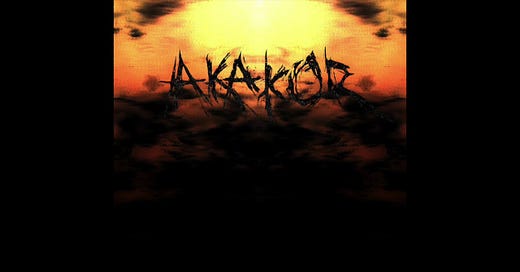




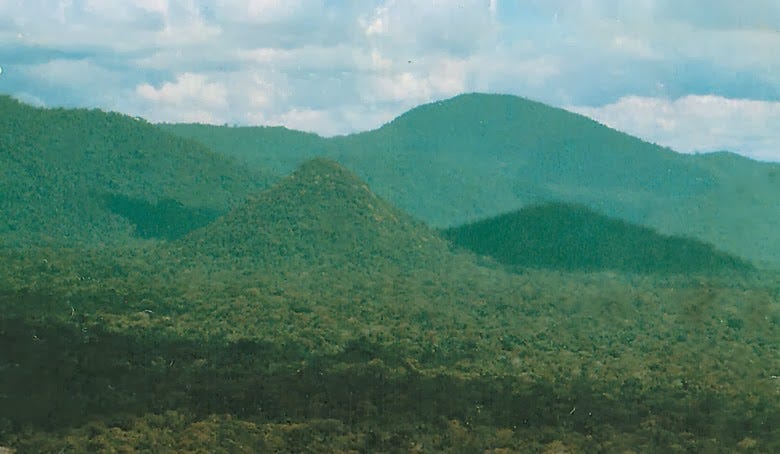
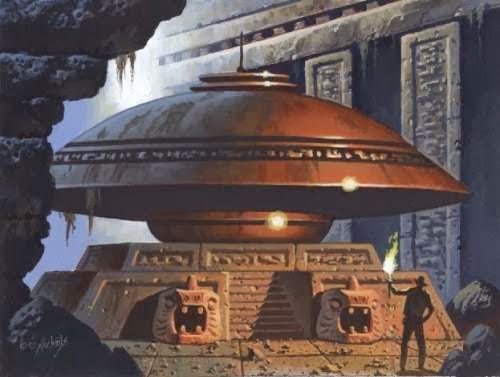
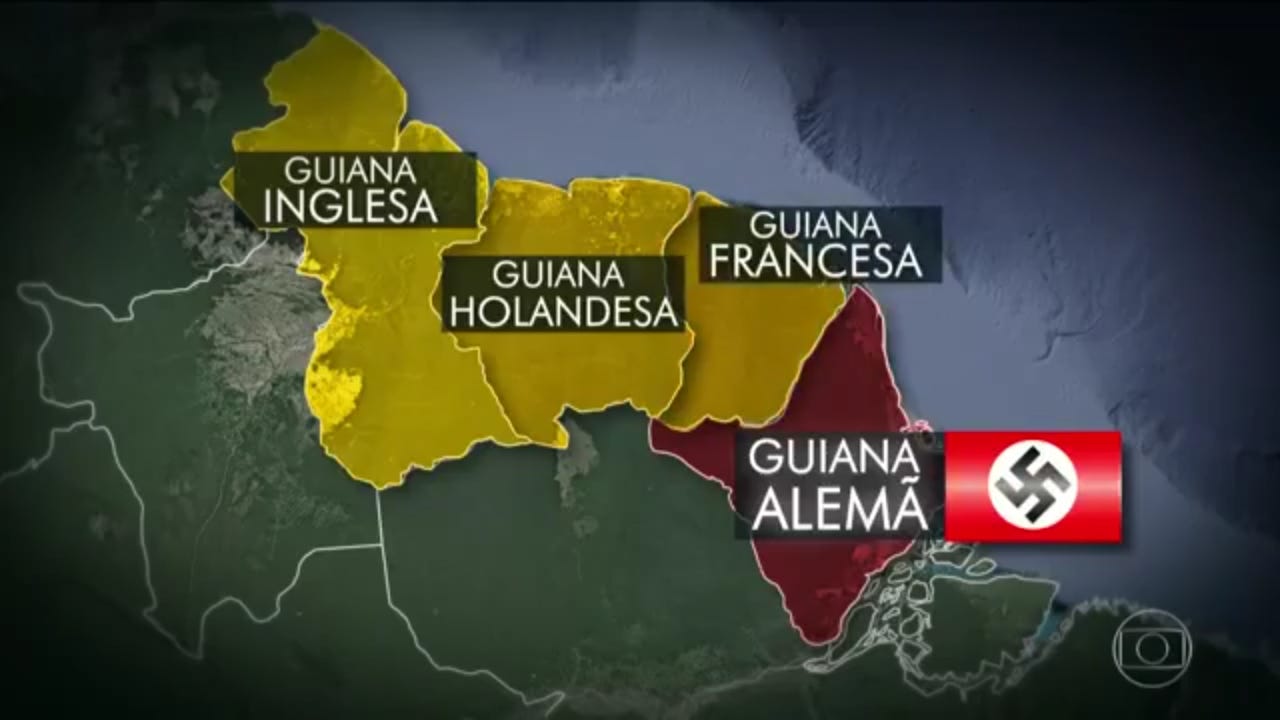
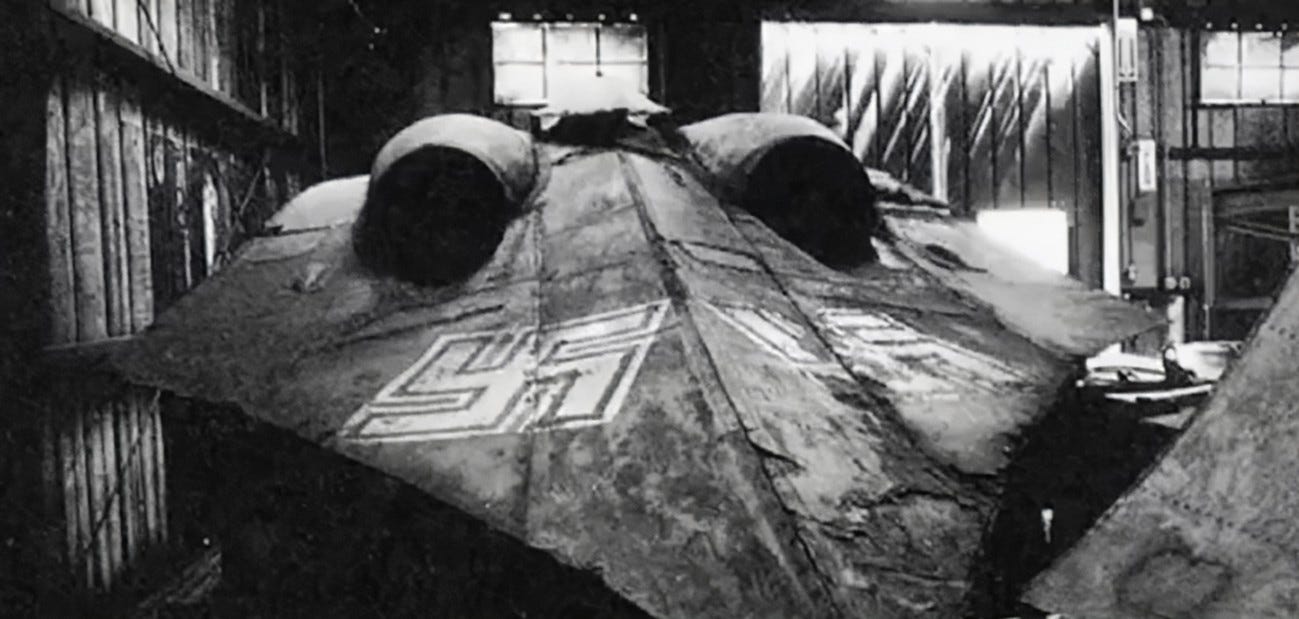

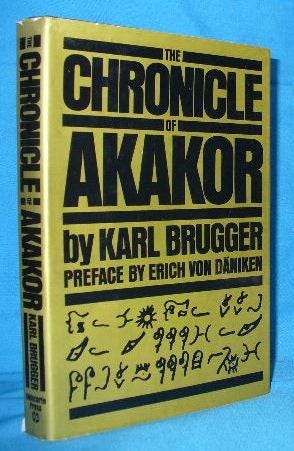
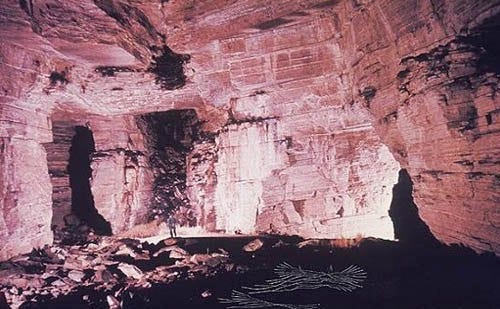
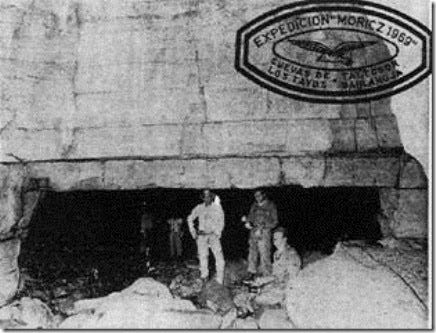




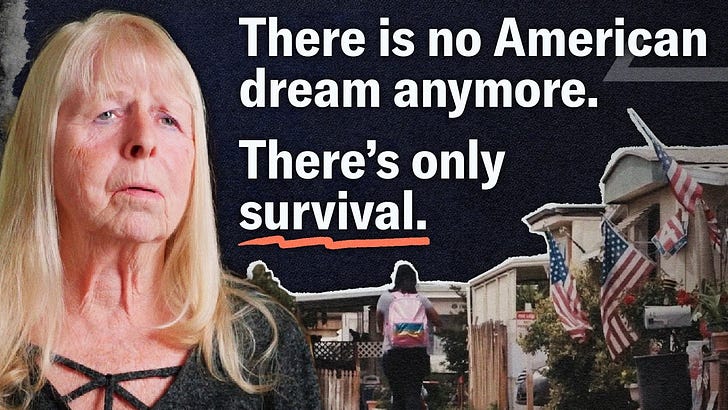


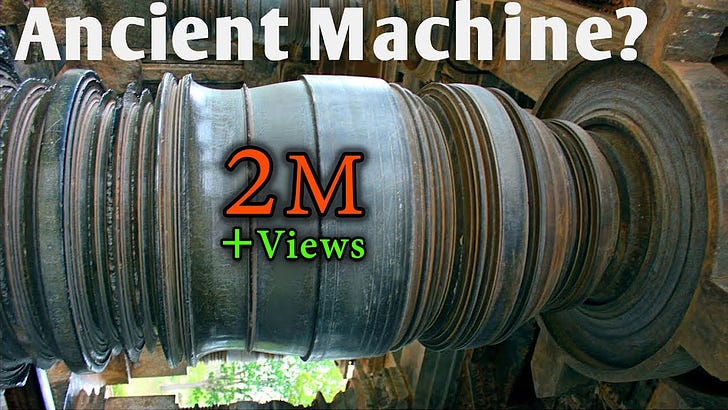
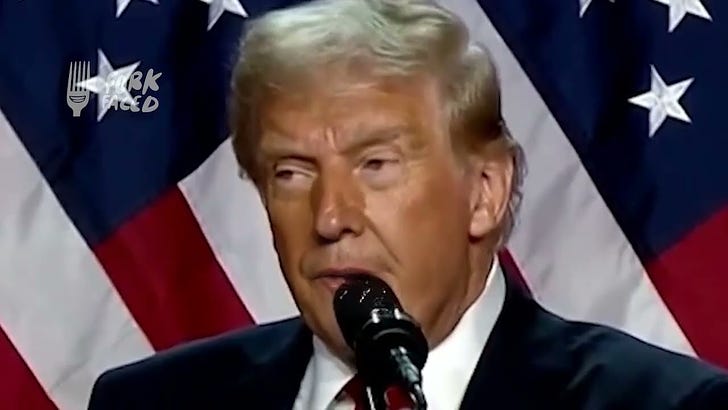

Share this post